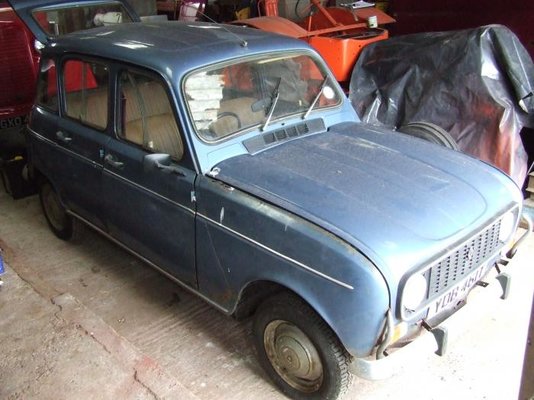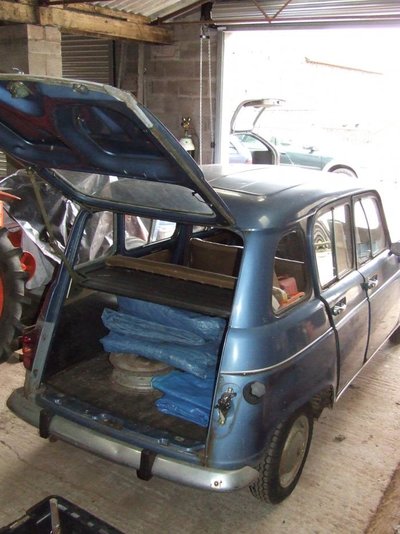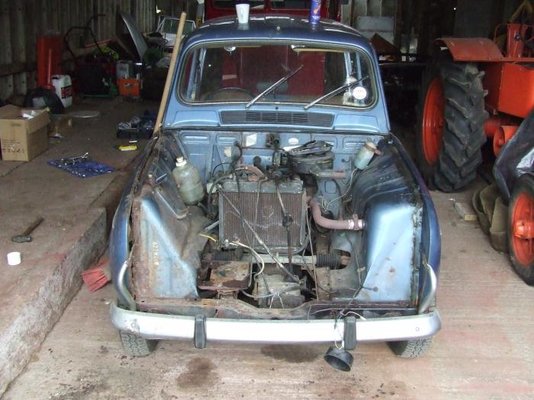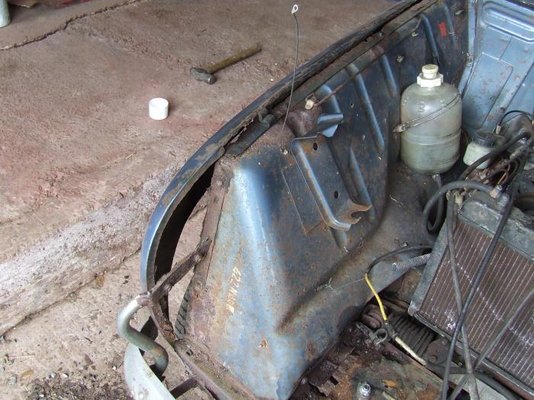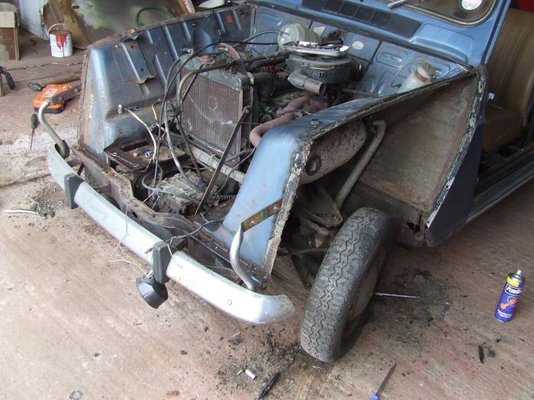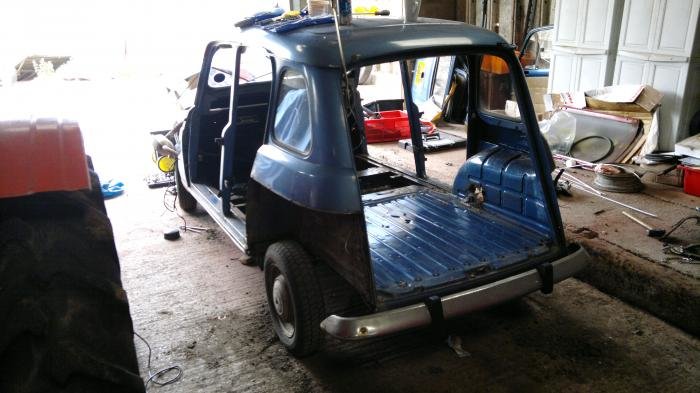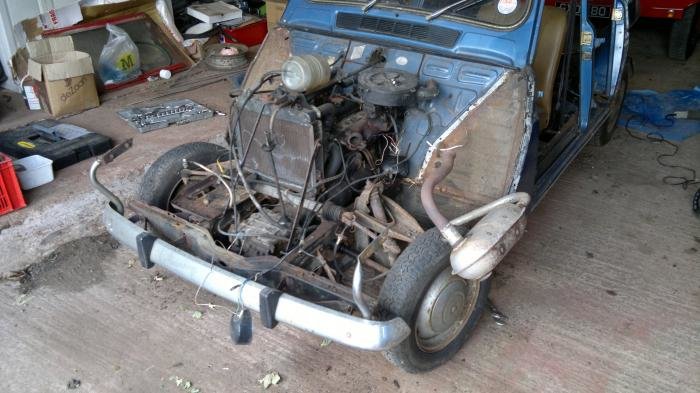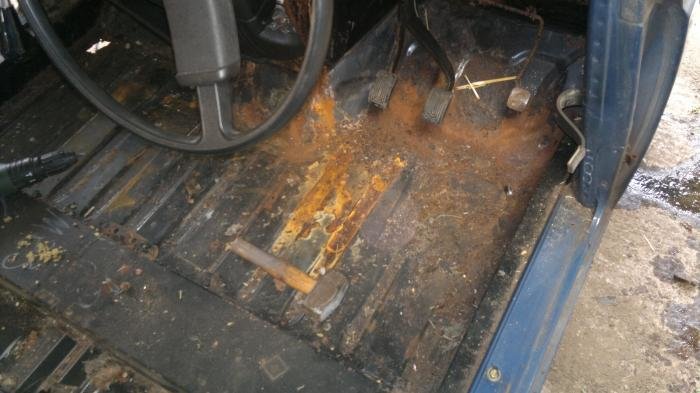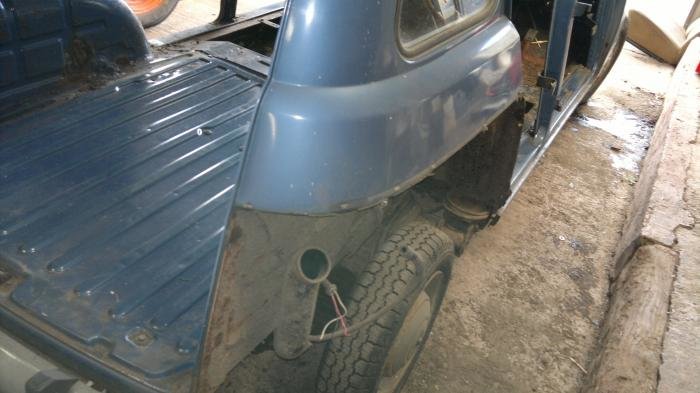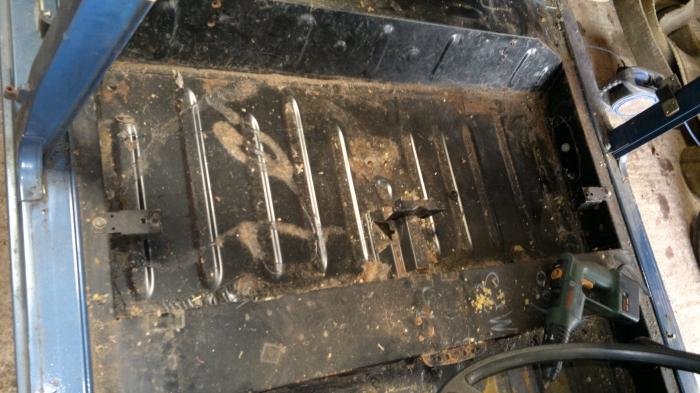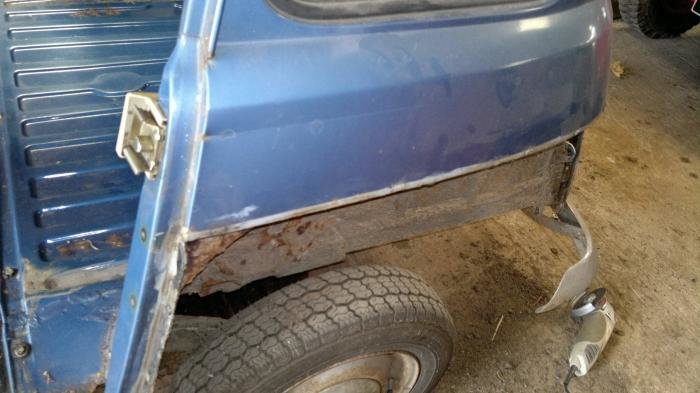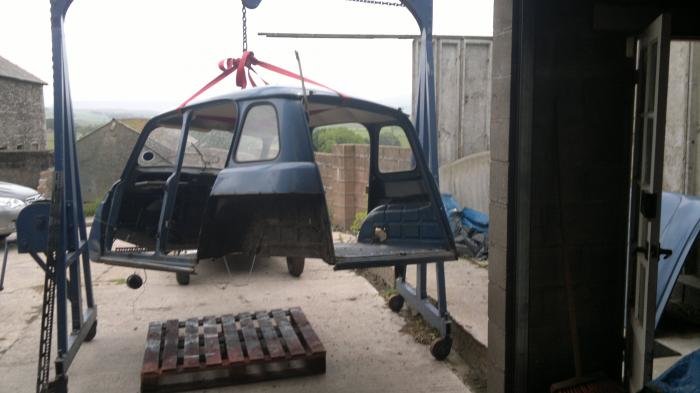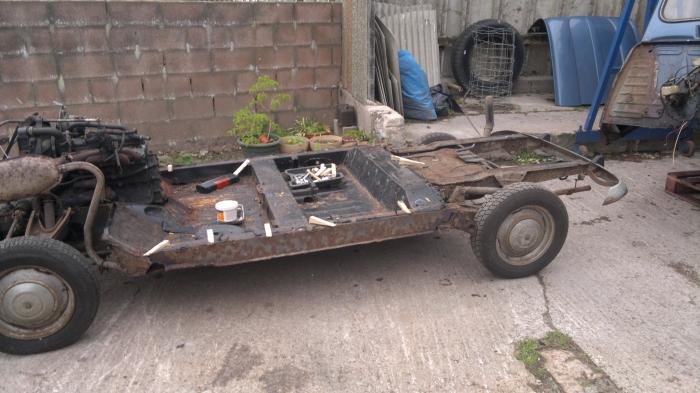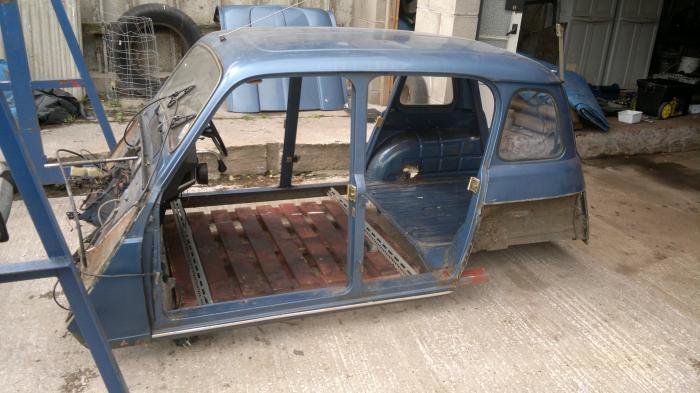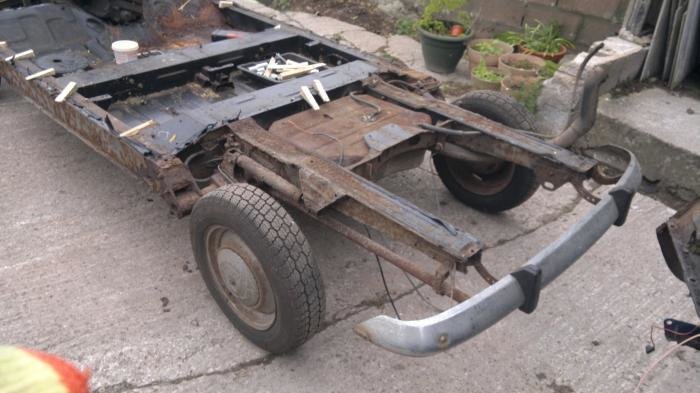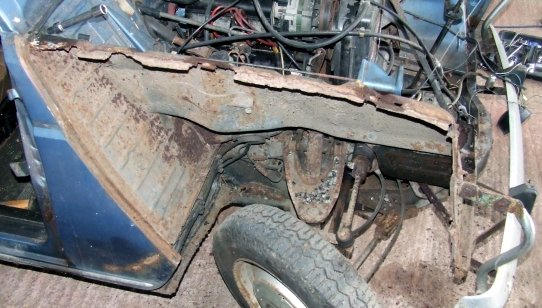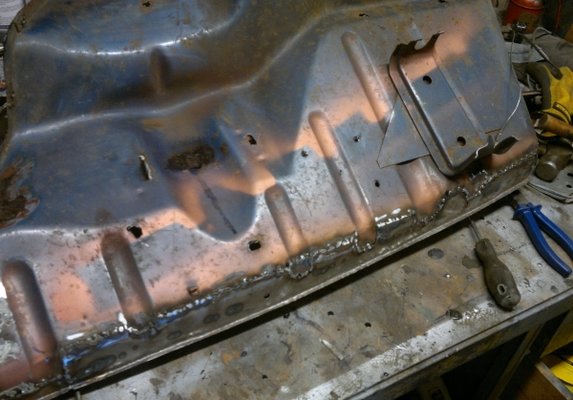barnfind
Enthusiast
- Messages
- 323
- Location
- Lancashire
Not sure where to put this. Some car forums have a section for restoration and rebuild threads, so please feel free to relocate this thread if you think fit.
Today was day 1, back to Paul’s workshop with tools and Plus Gas to start a strip down.
The doors came off extremely easily after the top hinge retaining nut was unscrewed from the spindle, insert a largish screwdriver on edge in the slot between the two leaves of the hinge and lever and the whole lot just slips off.
The doors are good, only the Driver’s door has some rot in the lower front corner which I shall probably repair rather than replace (unless anyone has a suitable external hinge type drivers’ door going begging. Sliding window frames need some attention however.
Tailgate again came off very easily after undoing the single retaining nut on the nearside spindle and disconnecting the wires and the stay. Once more, no rust.
After a bit of scrambling around the bonnet came off (I removed the grille to avoid any damage), The front cross member looks a little crusty underneath, but not too bad. The bonnet itself is very good cosmetically, but the bottom stiffening member has some perforations that will need welding up. Oddly enough the front of the car was full of large tarmac chippings. Obviously one of its later trips back in 1992 was through some local road surfacing works.
Outer front wings were straightforward after I discovered that the rubber stop on the nearside had been screwed through the mounting flange. The offside was scrap, the inner front area having vanished completely. I undid what I could and then chopped the rear edge off with a cutting disc to release it so that I could get at the mountings more easily. The other wing looks fairly new and came off reasonably easily.
Inner wings were the usual R4 stuff, nearside has been repaired previously and is okay, albeit the welding is untidy even by my standards, but the offside needs a repair strip along the mounting flange. After taking out the parcel shelf, I managed to release all the bolts to the offside, but need to disconnect the brakelines to remove it.
The day was completed by soaking all the remaining fixings with releasing oil, and I will return later this week to remove rear wings and interior.
Generally my first impressions from when I viewed the car before Easter were borne out. There is clearly chassis rot in the front nearside corner and the top of the nearside rear outboard box section has also perished. What exactly we have to contend with elsewhere will be revealed, probably next week, when we attempt to lift the tub off the pan.
Time spent, approx 6 hours.
Today was day 1, back to Paul’s workshop with tools and Plus Gas to start a strip down.
The doors came off extremely easily after the top hinge retaining nut was unscrewed from the spindle, insert a largish screwdriver on edge in the slot between the two leaves of the hinge and lever and the whole lot just slips off.
The doors are good, only the Driver’s door has some rot in the lower front corner which I shall probably repair rather than replace (unless anyone has a suitable external hinge type drivers’ door going begging. Sliding window frames need some attention however.
Tailgate again came off very easily after undoing the single retaining nut on the nearside spindle and disconnecting the wires and the stay. Once more, no rust.
After a bit of scrambling around the bonnet came off (I removed the grille to avoid any damage), The front cross member looks a little crusty underneath, but not too bad. The bonnet itself is very good cosmetically, but the bottom stiffening member has some perforations that will need welding up. Oddly enough the front of the car was full of large tarmac chippings. Obviously one of its later trips back in 1992 was through some local road surfacing works.
Outer front wings were straightforward after I discovered that the rubber stop on the nearside had been screwed through the mounting flange. The offside was scrap, the inner front area having vanished completely. I undid what I could and then chopped the rear edge off with a cutting disc to release it so that I could get at the mountings more easily. The other wing looks fairly new and came off reasonably easily.
Inner wings were the usual R4 stuff, nearside has been repaired previously and is okay, albeit the welding is untidy even by my standards, but the offside needs a repair strip along the mounting flange. After taking out the parcel shelf, I managed to release all the bolts to the offside, but need to disconnect the brakelines to remove it.
The day was completed by soaking all the remaining fixings with releasing oil, and I will return later this week to remove rear wings and interior.
Generally my first impressions from when I viewed the car before Easter were borne out. There is clearly chassis rot in the front nearside corner and the top of the nearside rear outboard box section has also perished. What exactly we have to contend with elsewhere will be revealed, probably next week, when we attempt to lift the tub off the pan.
Time spent, approx 6 hours.
Last edited:





